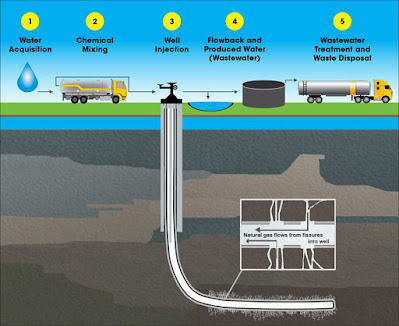A study by the U.S. Geological Survey appears to have answered a critical question about the millions of gallons of chemical-laced water that are injected into the wells to fracture rocks and release trapped gas. Is there any cause for concern when that water is stored later, whether in treatment facilities or special underground wells?U.S. Geological Survey (USGS) scientists studying a midwestern stream conclude that pharmaceuticals and other contaminants in treated wastewater effluent discharged to the stream are transported into adjacent shallow groundwater. Other mobile chemicals found in wastewater are expected to have similar fates. The study was conducted at Fourmile Creek, a wastewater-dominated stream near Des Moines, Iowa, during two sampling periods, October and December 2012. Wastewater effluent contributed approximately 99 and 71 percent of the flow in Fourmile Creek during these sampling periods, respectively. Persistent dry conditions predominated in the watershed through the study period.
In another study, upstream from the storage tanks, the waters of Wolf Creek tested normal. Downstream, there were detectable levels of chemicals that commonly lace fracking waste — barium, bromide, calcium, chloride, sodium, lithium, strontium. The report called the levels low, not enough to have a noticeable impact on marine life. But they did appear to have an effect on something that could be equally important. Read the full article.
In another study, University of Texas research shows link between oil and gas water disposal and earthquakes. A wastewater holding tank on a drill site in Prague, Okla., is shown. A new University of Texas at Austin study linked oil and gas wastewater disposal with earthquakes. Read full article.

